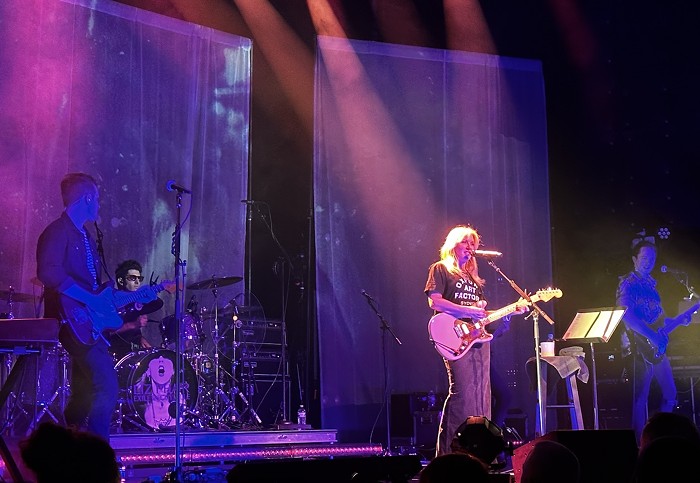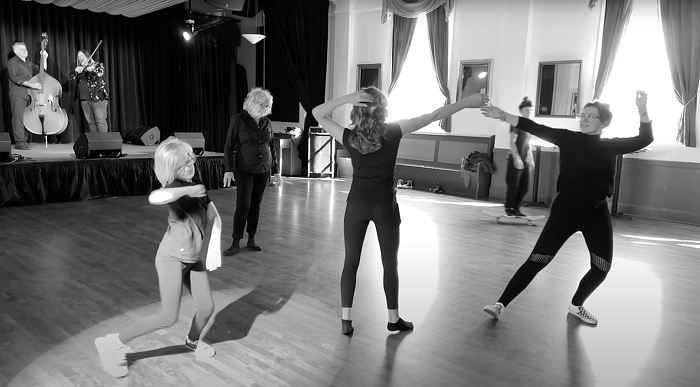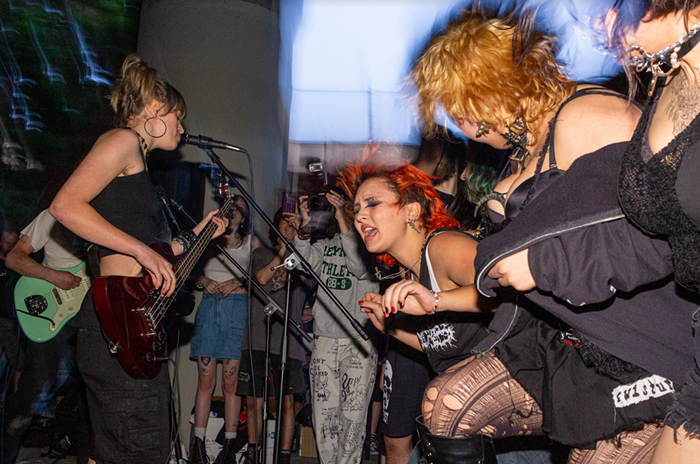Before most of us had a home computer, much less any sense of good graphic and sound design, Sean Booth and Rob Brown were dreaming up tones and images that would eventually become a guiding force in electronic music. The two formed Autechre, one of the few bands that have managed to successfully build themselves into an enterprise over the course of their career. Cited as an influence by Thom Yorke in the crafting of Kid A and Amnesiac, and taking a substantial role in the branding of the IDM image, Autechre has had a far reaching impact on the machine music world. The band is modest about their importance, but in the last 15 years they have spun a large part of the aesthetic sphere that surrounds the modern techno tastemaker.
Their aesthetic consists of paranormal, robotic minimalism imbued with a peculiar mystery, an ominous overtone insinuating a larger unknown. Much of their visual imagery can be attributed to the Designers Republic, the once anti-establishment design collective that, like Autechre, started stirring in Sheffield, England in the late 1980s. Their album art is bizarre, ranging from unearthly landscape photos with barely-there text to solid color backgrounds with institutional-style block fonts implying a soulless, Gattaca-like existence.
The Autechre sound has morphed over the years, becoming increasingly experimental amid praise and protest. Their early work is fairly accessible, with songs that are somewhat danceable, or at the very least, melodic and palatable. After a few well-received releases, Autechre started generating more grotesque, perplexing sounds, and placing them in unconventional song structures. Many fans found the new direction off-putting, but the resulting spastic soundscapes strengthened their stripped-down, science-fiction style.
Even the words used for album titles and track names seem to come from a different language. Not a foreign language, but an alien one. The first full-length album, Incubala, was followed up over the years with track names like "Pule," "Inhake 2," "Parhelic Triangle," and "Teartear."
Their ninth album, Quaristice, recently released on premier experimental label Warp Records, is a fitting next step in Autechre's discography. It clicks perfectly into the aesthetic framework the band has established over the years, and in a way, mirrors their entire career—cutting-edge, unpredictable, and lacking any sort of binding theme. Although the listener is eased in with "Altibzz," a dreamy and atmospheric track suggestive of earlier ambient work, the very next track lurches out, sounding like it accidentally started somewhere in the middle of the song, instead of at the beginning. The remaining 18 tracks are similarly at odds, some jarring and abstruse, some pleasantly atmospheric, all sharing a common mood of abnormality.
Highly regarded as a pioneering force in their genre, Autechre has plenty of die-hard fans that swear Booth and Brown are the founders of all concepts experimental and electronic in nature. Of course, they are not the nucleus of the IDM universe to everyone, but their vision does distinctly inform the electronic music domain. Always evading suggestions that they are keystone artists in their genre, Autechre keep a quiet profile and rarely tour the United States—an apposite bit of mystery that makes this live appearance all the more exciting.


















